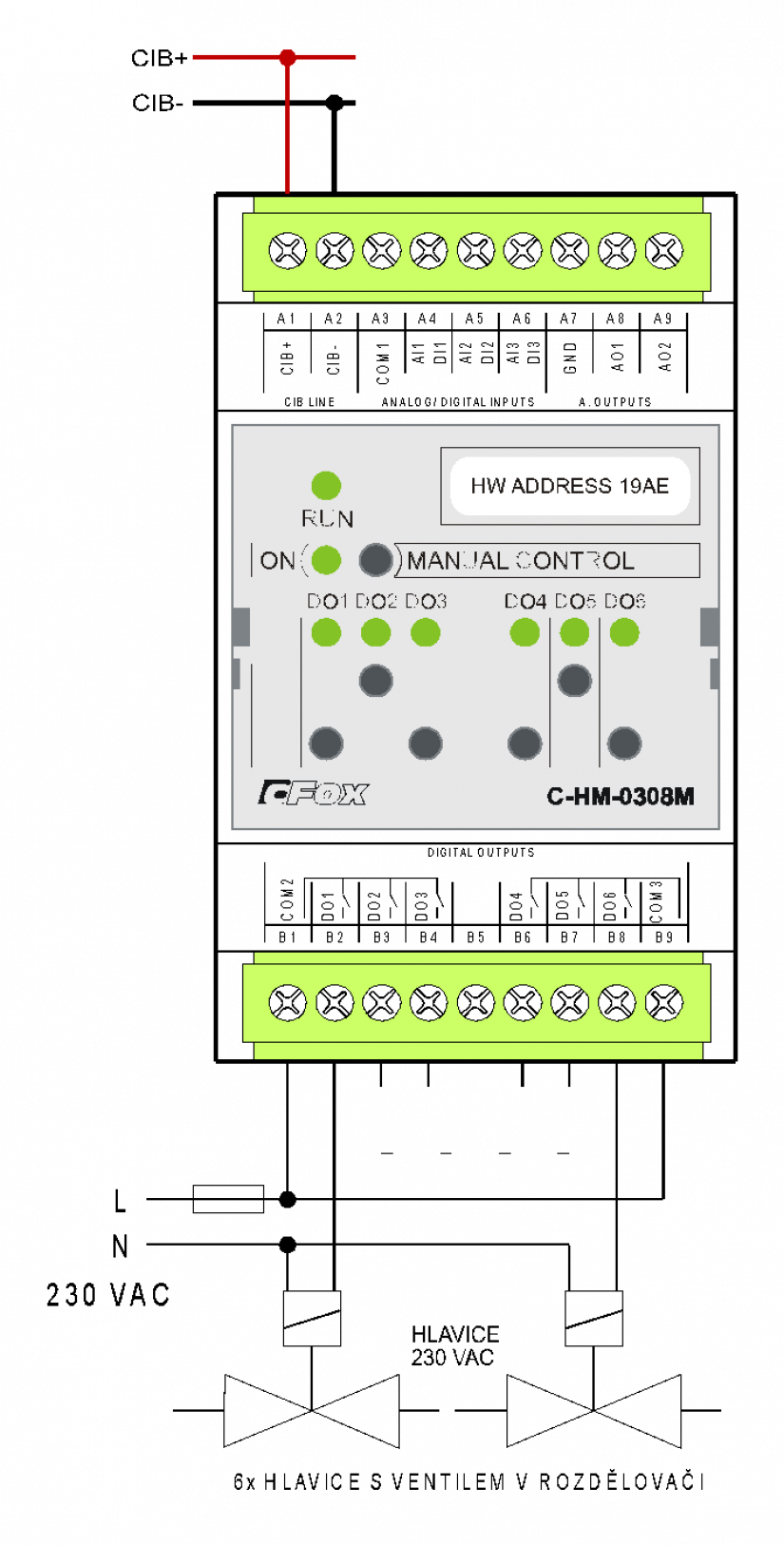Water underfloor heating is a comfortable low-temperature system for heating rooms. It ensures optimal room temperature profile approaching the ideal recommended values.
Individual loops are brought together into the so-called manifold, which sets the flow in individual branches (loops). Underfloor heating is one of the slow-reacting systems with high inertia, but it can be implemented in such a way that after about 45 minutes there is a distinct change in the room temperature, and it is possible to control the temperature in individual rooms reasonably well. Underfloor heating is advantageous both because of savings on heating costs, but mainly because comfortable temperature can be reached in individual rooms, which are influenced in time by solar gains, heat dissipation from domestic appliances and also in accordance with the wishes of the occupants.
In order to control heating in individual rooms, you should mount the manifold valves with powered drives.
The drives (mostly two-position) located in the manifold can be switched by several types of modules (depending on the number of branches and possibly other requirements for the measurement or control); any relay outputs of the system can be used for the control function. The following figure demonstrates the control of 6 actuators in the manifold. The C-HM-0308M module used in the example can be mounted directly in the manifold.
For detailed information on suitable drives and their parameters, see Hot water heaters, panel radiators.
For effective utilization of maximum floor temperature (high power for temperature increase ) it is appropriate to fit in the floor a temperature sensor, which allows you to monitor the maximum floor temperature - about 29 °C for the living quarters, and 33 °C for bathroom floors and up to 35 °C for floors around the pool. Then you can regulate the temperature of heating water so as to utilize the maximum permissible temperature in the system (e.g. 45 °C), but not exceed the maximum temperature of the floor.
Suitable sensors for measuring floor temperature are listed in Chapter Measuring floor temperature, the temperature sensors with cable outlets, where detailed information is presented on the assembly and placement of the temperature sensor in the floor.
The temperature in a heated room is measured either by an independent temperature sensor located on the wall, which is usually included in the design of electrical installation elements (switches, sockets) in the room
Or you can use a control unit with a display, which also measures the ambient temperature, and it is also connected with the floor temperature sensor.

Fig. 1. An example of the C-HM-0308M hydronic floor heating module control
 English
English